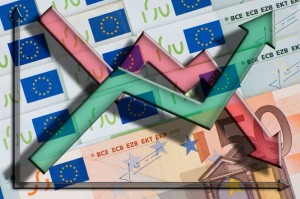Portuguese economy in positive territory but deflation is a problem
Portugal makes clean exit from bailout
Demand for Portugal’s bonds drives down yield
Positive trends in economic climate and GDP continue
Deflation is an obstacle to growth… but will the ECB act?
Portugal is exiting its three-year €78bn bailout on 17 May without requesting a standby line of credit. The loan had been granted in May 2011 by the European Union and the International Monetary Fund. Since then Portugal has stuck to the tough measures mandated by the bailout.
“The government had decided to exit the assistance programme without turning to any kind of precautionary programme”, Prime Minister Pedro Passos Coelho told national television. The decision was the “best for the interests of Portugal” after the country “regained its credibility,” he added.
This follows a successful sale of government bonds in April, when yields on its 10-year government debt fell to an eight-year low of 3.58%. Investor interest in the €750m bond auction was such that it was three times over-subscribed. The yield on 10-year bonds had stood at 5.1% in February.
Portugal’s “clean exit” route followed Ireland’s in December, when it became the first eurozone nation to exit a bailout. It also follows more than a year of upward movement in Portugal’s economic climate. Industrial production continues to grow, whilst the contraction in the services sector is tailing off. The rate of contraction in the construction sector is also falling.
Q1/2014 saw the third successive quarter of GDP growth (+0.6%) after ten successive quarters of contraction. Although GDP is now increasing, the 2013 figure was still nearly 16% below its peak in 2009.
This improvement is mirrored by modest increases for the past four successive quarters in the number of persons employed, after a declining trend for the previous nineteen quarters. There are still 666,600 fewer people employed than at the peak in Q2/2008.
The employment figures would be worse if not for an exodus of working people. The overall resident population shrank by 159,000 over the past three years.
In 2013, the trade deficit narrowed 15% over the previous year, to €9.28bn, the lowest since 1996. This was achieved through a combination of increasing exports and reducing imports. Exports have been growing, while the austerity measures have depressed domestic demand. The deficit has widened again in 2014, perhaps as a result of pent-up demand for imports. New car registrations, for example, were 28% higher in Q1/2014 than in Q4/2013.
The golden visa programme has already delivered a decisive stimulus to the real estate market, being responsible for over €400m in incoming investment in less than 18 months. The non-habitual residency tax regime is also stimulating new demand for retirement real estate.
However, the eurozone economic picture is marred by very low inflation overall, with outright deflation in the peripheral economies. Eurozone inflation dropped to 0.5% in March. Greece saw price disinflation of 1.5%, Portugal of 0.4% and Spain 0.2%, while Italy, the Netherlands and Denmark are as close to falling prices as makes no difference.
Jeremy Warner of The Telegraph comments, “The line being taken in Brussels is that this is not damaging deflation but rather ‘relative price adjustment’ with some countries are being forced to adjust their prices and wages in order to become more competitive with others. The problem with this analysis is that if relative price adjustment is the intention, then you would still want to manage your affairs so as to meet an overall 2 per cent inflation target, for the same effect can just as easily be achieved simply by having a higher inflation rate in the eurozone’s more competitive core.”
This talk of competitiveness is framed to sound as if Portuguese producers and workers want more for their products and services than the market will bear, but this is certainly not the only reason for the need for adjustment.
According to Eurostat, the 2011 average annual earnings in German industry and services were €42,900. By comparison, earnings in Portugal were €17,741, a mere 41% of the German figure.
Are we really saying that Portuguese workers produce less than 41% of their German counterparts, and so must continue to accept wage cuts in order to achieve parity?
This myth of lazy, feckless Club Med workers being unable to raise productivity is unfortunately still pervasive, and has underpinned the one-sided emphasis on austerity as the solution to the euro crisis.
Whole sectors of the Portuguese economy, including Algarve residential tourism construction, were made “uncompetitive” simply because they were selling to markets unable to accept the 20% + premium that the euro started to command at the end of 2008, following the devaluation of the pound and the dollar by quantitative easing.
Without the counterweight of the “weaker” Club Med economies to hold down the value of the euro, German exporting strength would have pushed up the value of its currency to “uncompetitive” levels.
The ECB has recently expressed concern, not only for the deflationary trend, but also for the persistently high value of the euro. It is now sending signals to prepare the markets for some further fiscal easing to address these issues.
Some inflation will be helpful to Portugal in reducing its debt burden, while even a mild devaluation of the euro will be a boon to exporters and to the residential tourism market.
May 2014
One Response to “Portuguese economy in positive territory but deflation is a problem”
Leave a Reply





world offshore on February 24th, 2015
It isn`t a problem only in Portugal. Many Euro area countries have already been put to the deflation. Bulgaria deflation rate is already at 1.8% per year, in Greece it has already more than 2%. In Lithuania is deflation. Such countries as Slovakia, Poland and Ireland are close to reaching a deflationary situation.